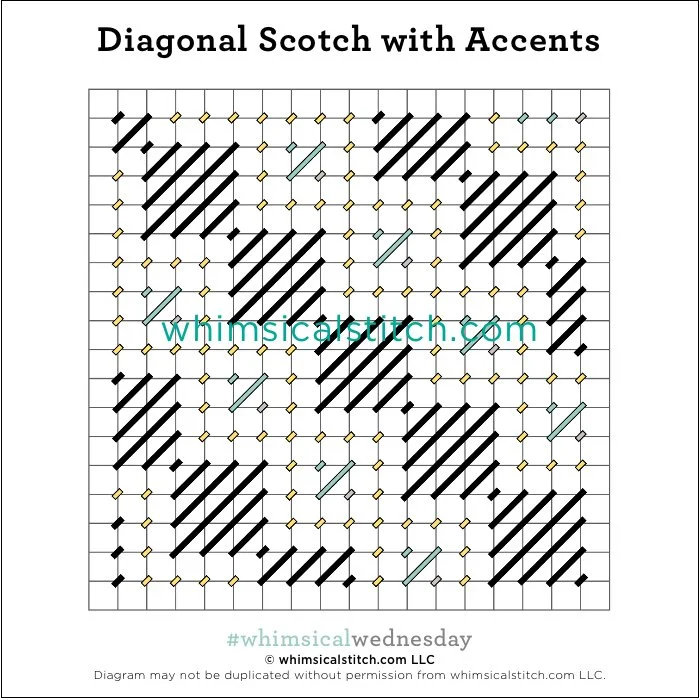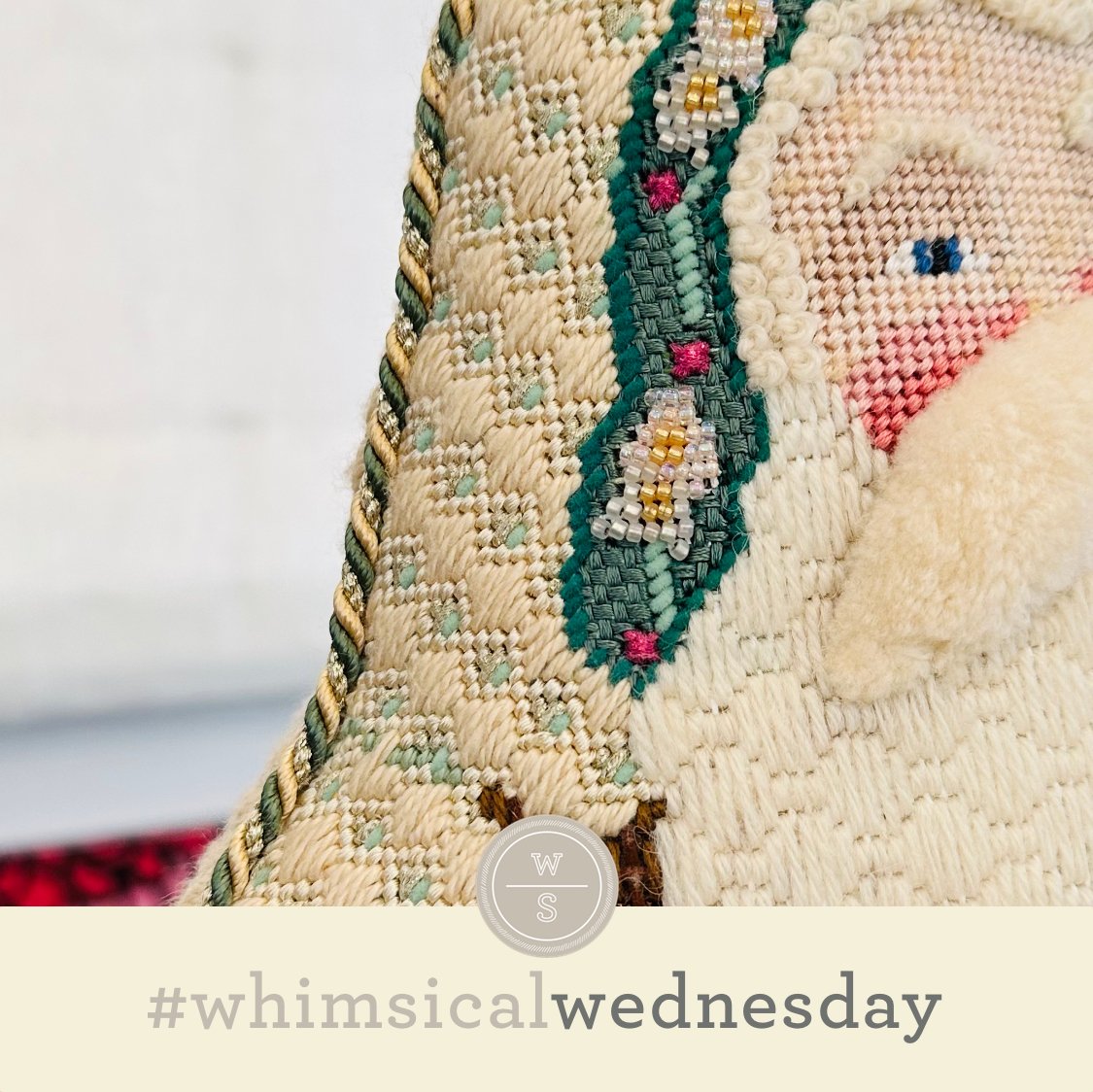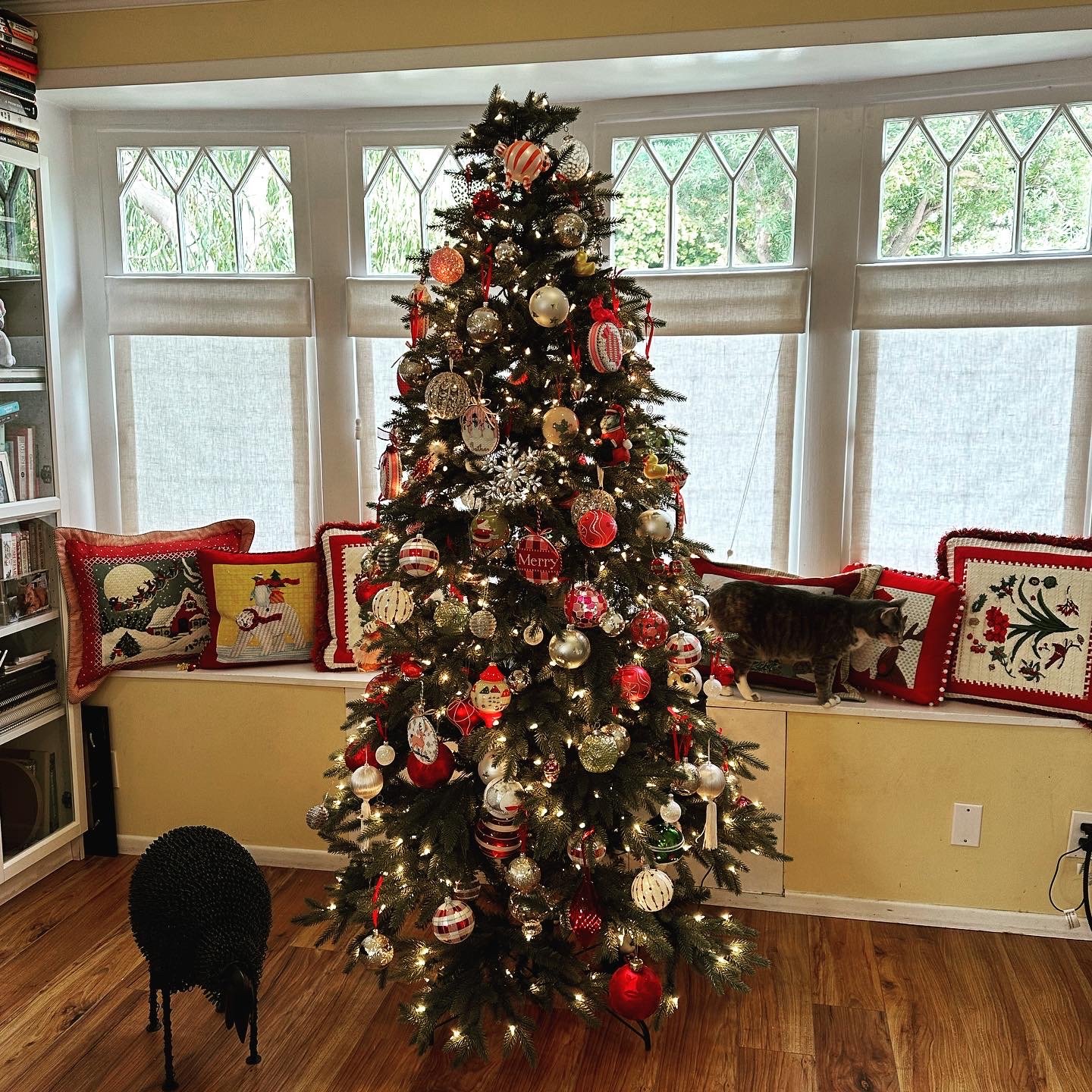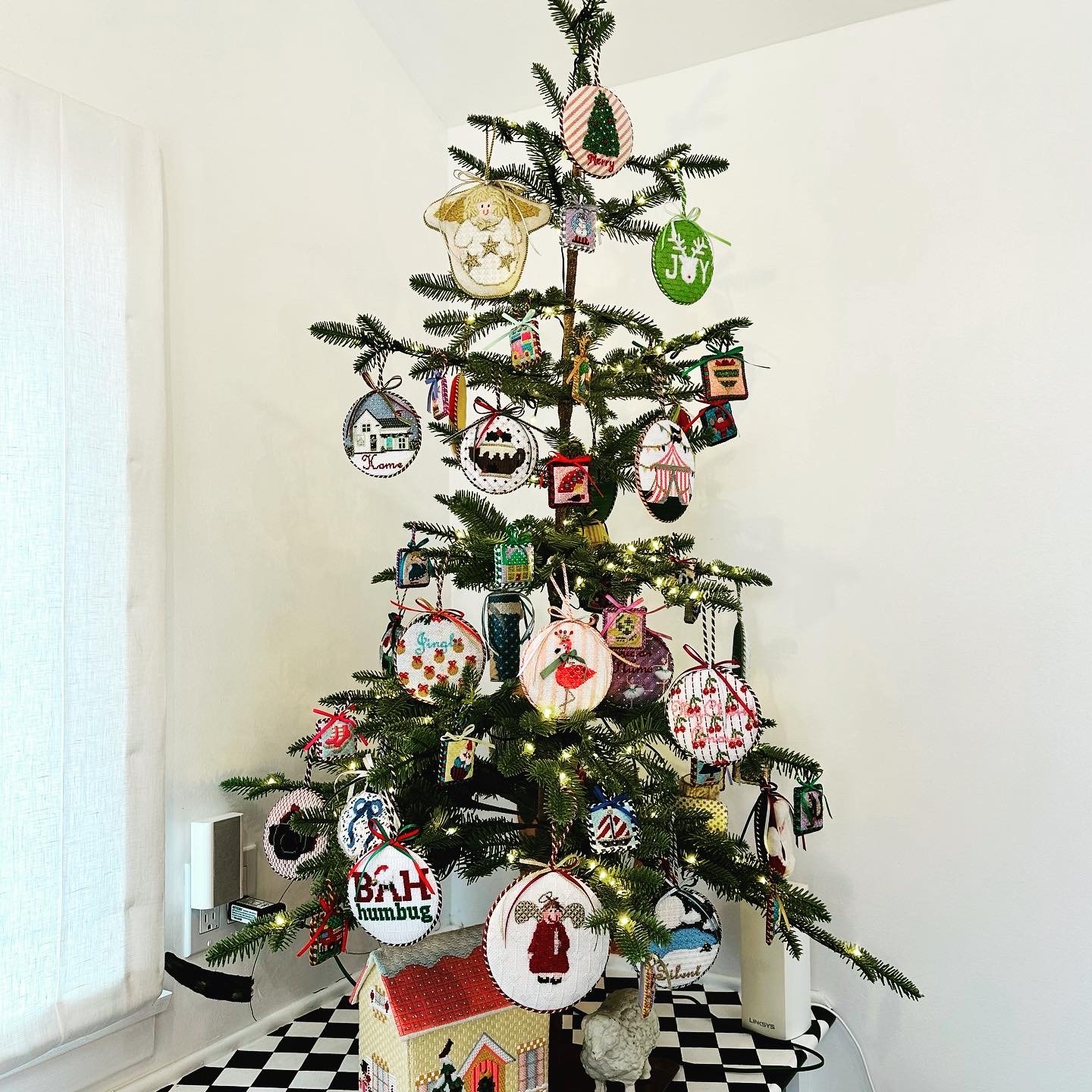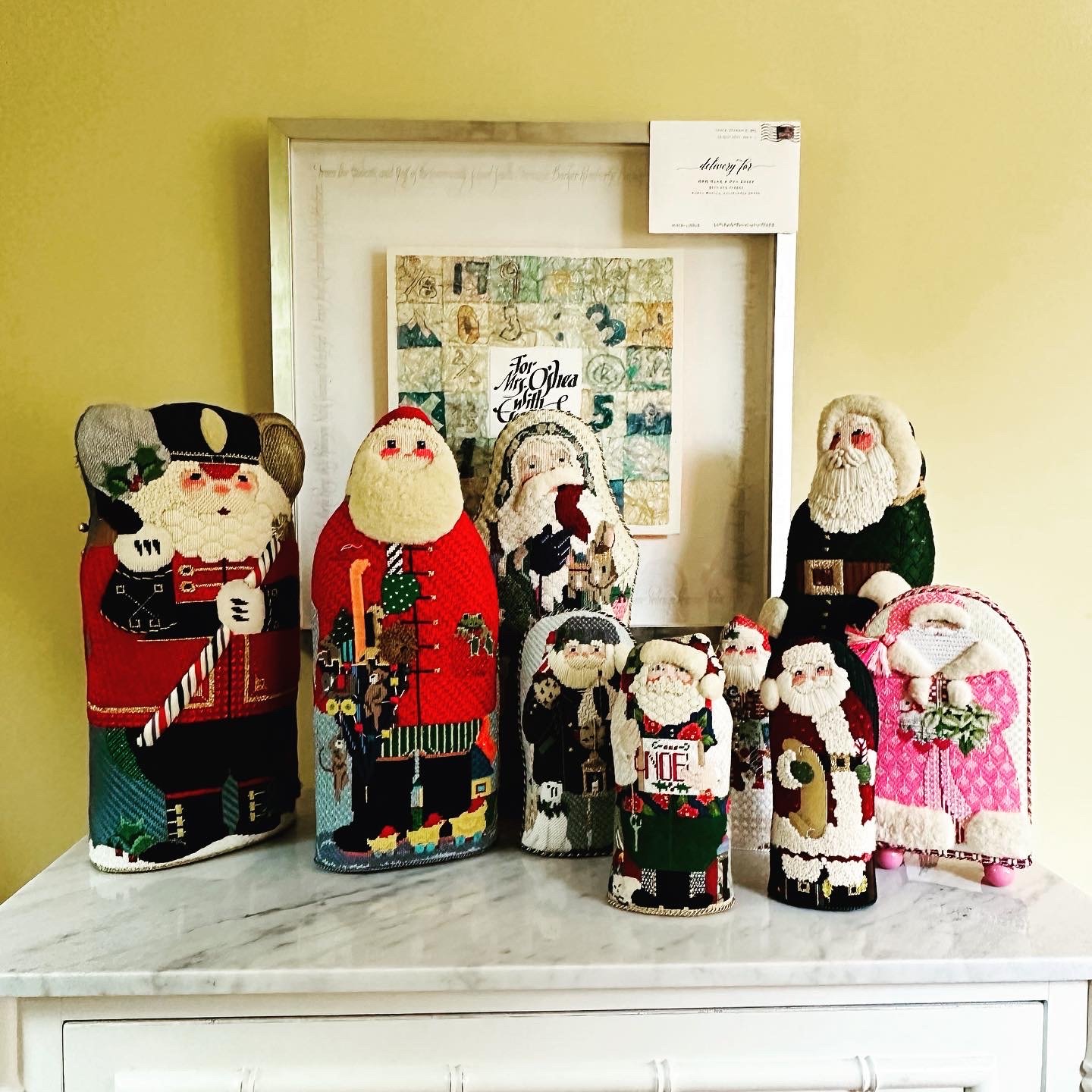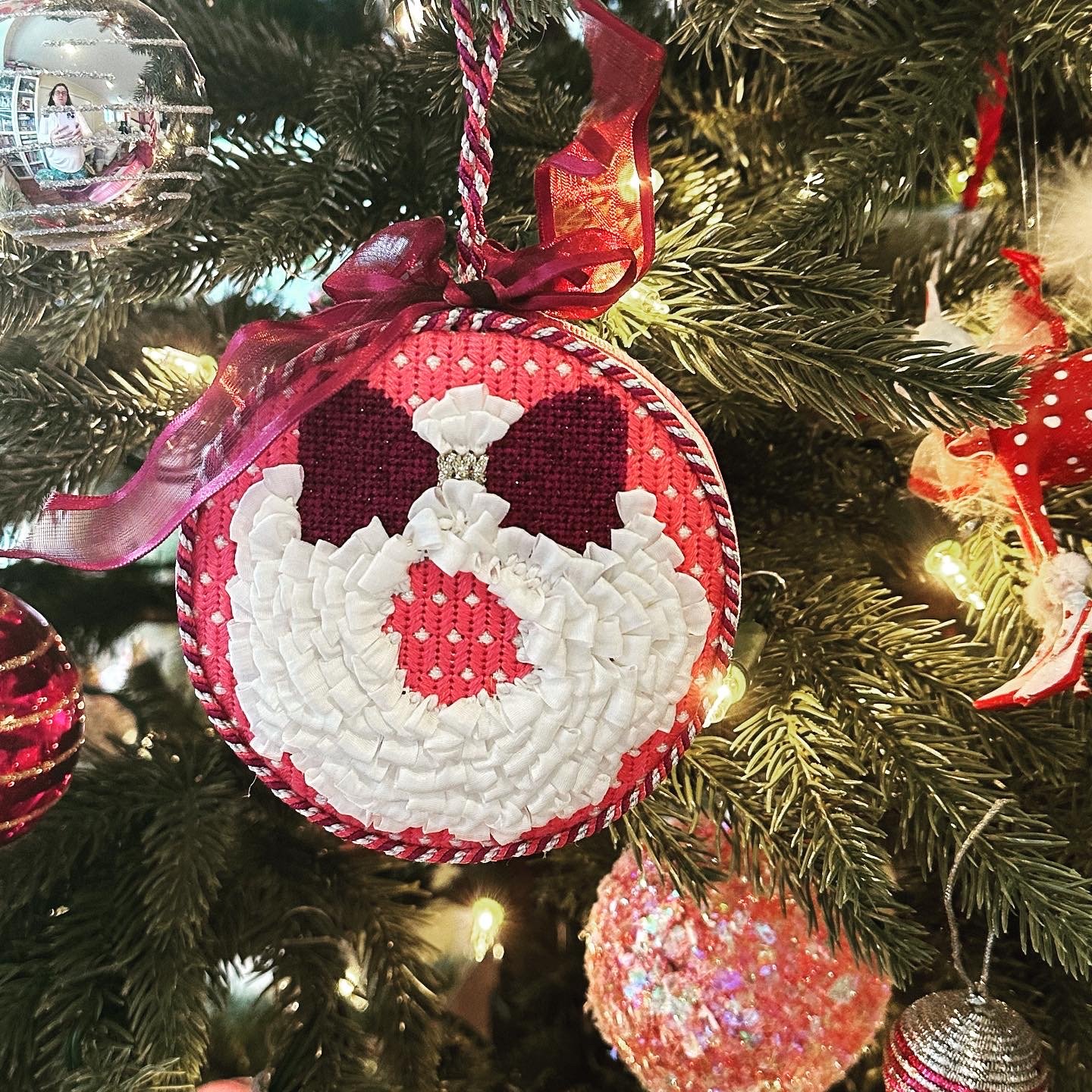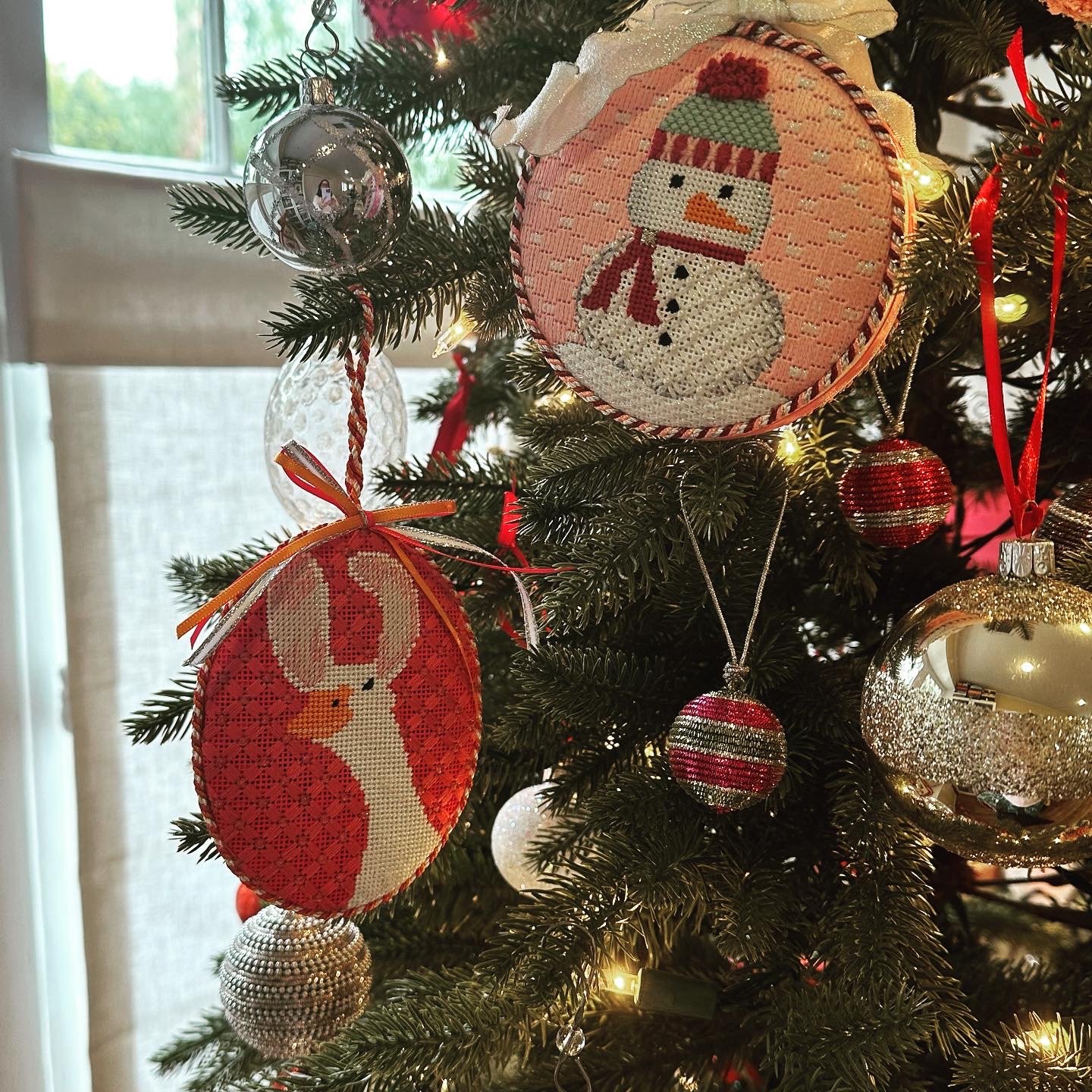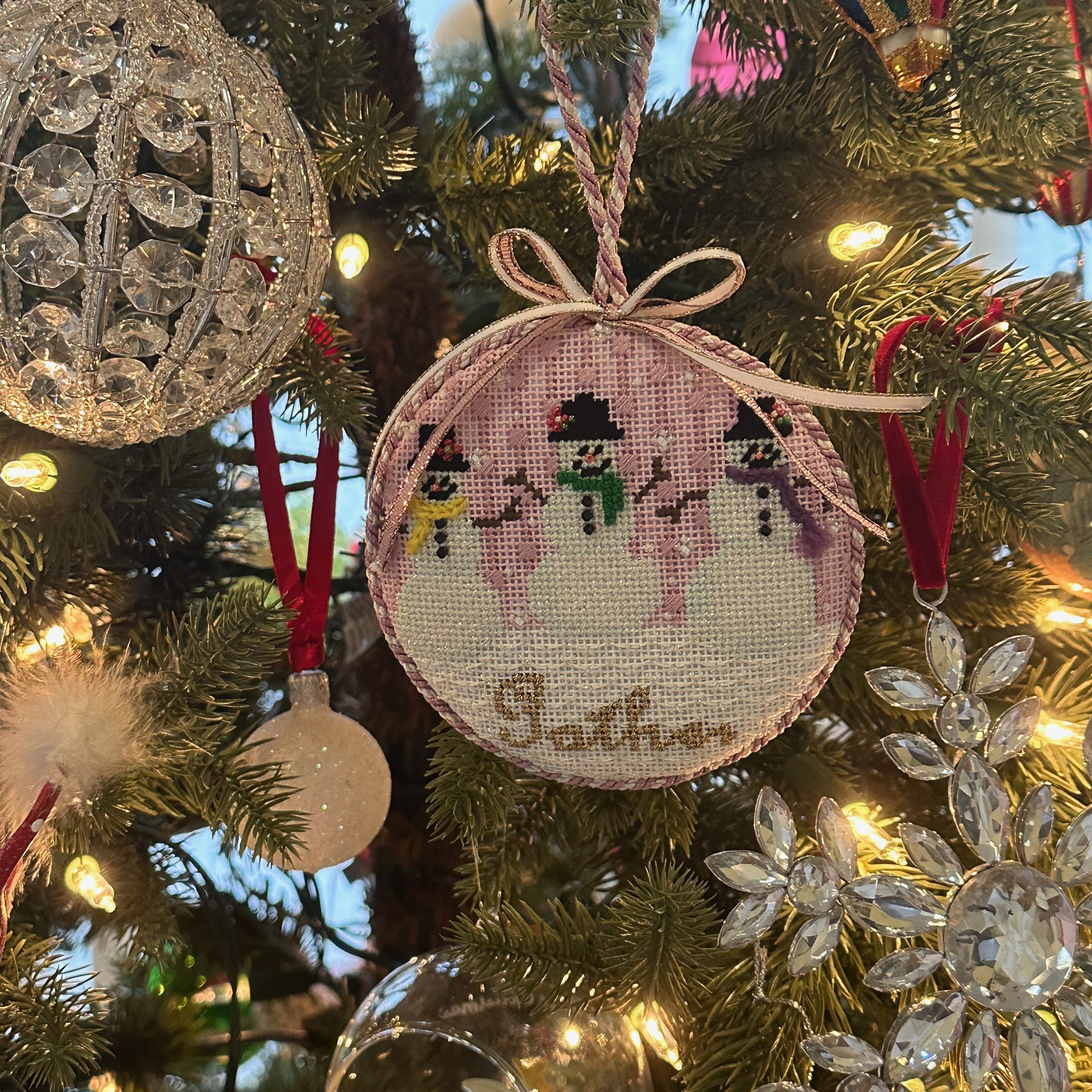Today’s stitch shows up in my home once a year as it is from one of my cherished Melissa Shirley two-sided Santa standups.
Technically, this stitch made its debut a few days ago. Visit Instagram to see a sample of my needlepoint Christmas decorations this year.
The stitched sample is 1990’s me stitching with Silk ‘n Ivory (black lines), Neon Rays (yellow lines), Frosty Rays (aqua lines), and Petite Very Velvet (gray lines) on a vintage Melissa Shirley two-sided Santa. (Today’s corresponding Instagram post also includes a full shot of both sides of Santa.)
This is a fantastic full-coverage stitch that is great for clothing. I adore the tiny pop of matte thread (Petite Very Velvet represented by the gray lines in the diagram) surrounded by metallic threads. It’s absolutely yummy. Another great thread combo for clothing is silk floss (five plies for 13M; three plies for 18M) for the black lines, Fyre Werks for the yellow lines, Flair for the aqua lines, and Vineyard Silk (13M) or Essentials (18M) for the gray lines.
I also like the idea of this stitch for a tree that you want to draw attention to in a project. I recommend Vineyard Silk (black lines), Flair (yellow lines), and an overdyed silk floss for the aqua AND gray lines.
Just a reminder about how to evaluate stitches for size on your project.
As you are auditioning stitches (from any stitch source), count the number of canvas threads on the diagram that match your mesh size. And there you have what an inch of the stitch will look like. Evaluate that against the area where you plan to use the stitch and make your final decision. If you start integrating this step into your stitch selection process, you may be surprised at how many stitches you think are large are much smaller than you realize. (Or, in today’s case, the stitch is much larger than it looks.)
By (sometimes) including this step in my own process, I find I am now integrating much longer stitches than I ever thought I would. I used to think a stitch six rows long was super big. I have very much changed my tune, which has helped me expand my creativity, especially for large-space stitches.
Today’s stitch diagram, along with all other #whimsicalwednesday and #smallspacesunday stitch diagrams, can also be found on a Pinterest board here. Be sure to follow whimsicalstitch.com on Facebook, Pinterest, Instagram, and Twitter.
If you like what you see on this blog, there's more. Mary’s Whimsical Stitches is a series of three books offering contemporary how-to collections of more than 250 stitches (in each volume) for all stitchers, regardless of skill level. All books include updated and sequenced diagrams from this blog plus a collection of all-new stitches from private lessons and other class projects. Visit here to find a needlepoint retailer that carries my books.
New to needlepoint or looking for a refresher? Please download a handy how-to guide covering basic needlepoint stitches and stitch compensation techniques along with new top-line information on needlepoint materials and tools, how to handle threads, and other helpful needlepoint resources.
whimsicalstitch.com also sells Stitch Guides and Stitch Concepts for Melissa Shirley Designs, Zecca Designs, Sandra Gilmore, Purple Palm, Maggie, and Penny MacLeod, and many more. Click here to see the newest guides and click here to see the entire collection.
I hope you have the perfect spot for this stitch! Please enjoy! Have a wonderful #whimsicalwednesday!
A Note about Diagrams
I use color in diagrams to make them as clear as possible. The primary function of different colored lines is to illustrate a stitch sequence. For example, the layering of colors demonstrates you add them in that order. They can also provide ideas on integrating additional threads (one line for each color). Or, you can use the same thread for all color lines. That's where I encourage you to use your imagination for the space you are stitching!


